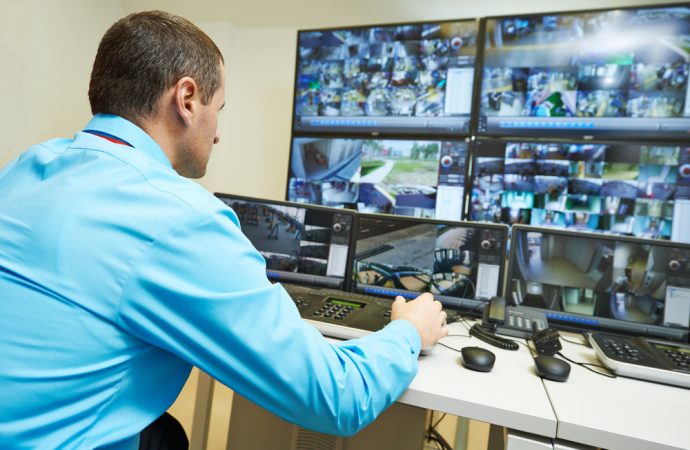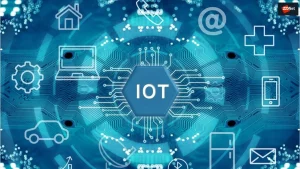Introduction Welcome to the future of security in commercial properties, where cutting-edge technology is reshaping safety and protection. In this article, we’ll explore the evolution of security in commercial properties and the innovative surveillance technologies that are revolutionizing the way businesses safeguard their assets. With the integration of advanced technology, commercial properties can now achieve
Introduction
Welcome to the future of security in commercial properties, where cutting-edge technology is reshaping safety and protection. In this article, we’ll explore the evolution of security in commercial properties and the innovative surveillance technologies that are revolutionizing the way businesses safeguard their assets. With the integration of advanced technology, commercial properties can now achieve unparalleled security and peace of mind.
The Changing Face of Security in Commercial Properties
Before we delve into the cutting-edge security technologies, let’s take a moment to understand how security in commercial properties has evolved:
Security in Commercial Properties: This includes the methods, systems, and technologies employed to protect commercial properties, including offices, warehouses, retail spaces, and industrial facilities. Traditionally, this involved physical security measures like locks and alarms. However, the landscape has transformed considerably.
In today’s dynamic and interconnected world, businesses require comprehensive security solutions that not only protect their physical assets but also offer real-time insights, efficiency, and adaptability.
Cutting-Edge Surveillance Technologies
1. Artificial Intelligence (AI) and Machine Learning
AI and machine learning have become pivotal in enhancing security and surveillance:
- Predictive Analysis: AI can predict potential security threats by analyzing data and identifying patterns.
- Behavior Analysis: Machine learning algorithms can recognize unusual behavior and trigger immediate alerts.
- Anomaly Detection: AI-powered systems can detect anomalies and potential security breaches in real-time.
2. Facial Recognition
Facial recognition technology is transforming access control and identity verification:
- Access Control: Employees can securely gain entry through facial recognition, eliminating the need for traditional access cards.
- Visitor Management: Recognize and manage visitors by cross-referencing their faces with databases, enhancing security.
- Attendance Tracking: Employ facial recognition to track employee attendance and working hours accurately.
3. Cloud-Based Security
Moving security data to the cloud offers several advantages:
- Scalability: Easily expand your security system without the need for additional on-site hardware.
- Remote Access: Access security information from anywhere, allowing for remote monitoring and management.
- Data Storage: Cost-effective and secure long-term data storage solutions.
4. Video Analytics
Advanced video analytics provide:
- Object Recognition: Systems can identify and track objects, distinguishing between people, vehicles, and specific individuals.
- Automated Alerts: Receive alerts for events like unauthorized access, loitering, or suspicious behavior.
- Historical Analysis: Analyze past footage to understand trends and improve security.
5. Internet of Things (IoT) Integration
The IoT is enhancing security through interconnected devices:
- Sensors: Smart sensors can detect environmental changes like fire, water leaks, or temperature fluctuations and trigger alerts.
- Integration: IoT devices can be integrated with security systems, allowing for automated responses to detected events.
Image by: https://www.zdnet.com/
6. Cybersecurity for Surveillance
With the increasing reliance on digital surveillance, cybersecurity is crucial:
- Encryption: Ensure data is encrypted to prevent unauthorized access to video feeds and stored footage.
- Firmware Updates: Regular updates to security camera firmware are essential to patch vulnerabilities.
- Secure Networks: Protect your surveillance system with secure, password-protected networks.
7. Mobile Security Apps
Mobile security apps allow property owners and security personnel to monitor their premises on the go:
- Live Streaming: Access real-time camera feeds from smartphones or tablets, facilitating immediate monitoring.
- Remote Control: Adjust camera angles and settings remotely, enhancing flexibility.
- Push Notifications: Receive instant alerts and notifications directly to mobile devices.
Conclusion
The evolution of security in commercial properties is marked by cutting-edge surveillance technologies that offer enhanced safety and peace of mind. With innovations like AI and machine learning, facial recognition, cloud-based security, video analytics, IoT integration, cybersecurity measures, and mobile security apps, businesses can protect their assets more effectively and stay ahead of emerging security challenges.
In a world where security threats continue to evolve, staying updated with these cutting-edge surveillance technologies ensures that commercial properties can maintain a secure and vigilant environment, safeguarding their assets and personnel. The future of security in commercial properties is intelligent, proactive, and adaptable to an ever-changing landscape.


















Leave a Comment
Your email address will not be published. Required fields are marked with *